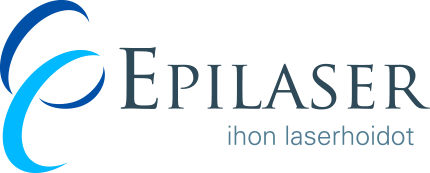What are the reasons for hair removal by laser?
Hair removal is carried out by laser due to skin conditions or other medical reasons. Such conditions include hirsutism, hypertrichosis caused by pharmaceutical products, folliculitis, pseudofolliculitis, hidradenitis suppurativa and sinus pilonidalis. Treatment is also carried out as part of the gender reassignment process. Since laser therapy as a method is the best hair removal method, an increasing amount of treatments are also carried out for aesthetic reasons.
When is treatment considered to be aesthetic?
Treatment is considered to be aesthetic when hair removal is carried out in normal areas of hair growth without a medical cause for treatment. Value added tax is applied to the prices of aesthetic treatments.
How is hirsutism defined?
Hirsutism refers to women’s excessive hair growth in male-like areas, such as the upper lip, chin, chest, lower abdomen, back and thighs.
What causes hirsutism?
The usual cause of hirsutism is polycystic ovary syndrome (PCOS). The syndrome also involves menstruation disorders, and often, obesity and infertility. Cushing syndrome and tumours of the pituitary gland or adrenal glands, as well as some medication, can cause hirsutism. Excessive hair growth can also be hereditary in some people. In such case, bothersome hair growth can occur at a very young age. A cause for excessive hair growth cannot always be determined.
Which lasers can be used to reduce hair growth?
We use alexandrite and diode lasers for the treatment of excessive hair growth. Alexandrite and diode lasers are suitable for treating light-toned Nordic skin types (skin phototypes I-IV).
What is the effectiveness of laser therapy based on?
Laser light is absorbed by the melanin in hair, in which case the hair heats up, and the hair follicle is destroyed. The treatment is not effective on light or reddish hair. The treatment only destroys the anagenic hair follicles, i.e. Hair follicles in the active growth phase when the hair is still growing in the hair follicle. In other words, the treatment is not effective on hairs in the resting phase. The best treatment result is achieved with serial treatments carried out at sufficient intervals, in which case the hairs in resting phase will be in the growth phase.
How do you prepare for treatment?
You can shave the hair in the area to be treated on the day of treatment or the day before treatment. However, do not pull out the hair or use an epilator before treatment because the hair must be in the hair follicle for the laser to be able to destroy the hair follicle and prevent the regrowth of the hair. It is also important that the skin is not tanned. Tanning that has faded over time does not prevent the treatment from being carried out.
How many treatment sessions are needed?
Treatments of the facial area can initially be carried out every 1-2 months. When hair growth in the area reduces, the treatment intervals often get longer. The number of necessary treatment sessions depends on, e.g. Gender, skin type, treatment device and intensity, as well as the colour, thickness and amount of hair. Treatment of the facial area usually requires 3-10 sessions, and after this, individual maintenance sessions may be necessary. Treatment of the body usually requires 4-7 sessions.
Does hair removal by laser hurt?
The laser pulse can be felt on the skin as a quick, temporary burning sensation. The pain depends on, e.g. The set treatment intensity, the number of dark hairs and the colour of the skin. Pain is alleviated during the treatment session with a cold air device or, in case of alexandrite laser treatment, with a cold spray. The pain only lasts for the duration of the treatment – once the treatment has been completed, the treated area may be slightly sensitive.
Are the results permanent?
Complete hairlessness cannot be guaranteed with even the best methods, but laser therapy can achieve long-term and permanent reduction of hair growth.
What is the follow-up reaction like?
After the treatment, the skin will usually be red for 30 min – 2 hours, sometimes even the rest of the day. Longer-term redness, skin scaling or scabbing rarely occurs. A moisturiser, such as aloe vera lotion, will calm the skin.
How do I access treatment?
An appointment at the reception or a remote appointment is booked with Epilaser’s dermatologist. The dermatologist shall clarify the background behind excess hair growth, the need for treatment and the patient’s suitability for treatment. The dermatologist can also carry out the first treatment session. The physician will usually make an SV3 referral to laser treatment sessions carried out by a nurse.
Book an appointment now!
Rovaniemi →Mikkeli →
Vantaa →
Hämeenlinna →
Jyväskylä →
Kokkola →
Kouvola →
Kuopio →
Lahti →
Lappeenranta →
Oulu →
Pori →
Seinäjoki →
Tampere →
Vaasa →



















